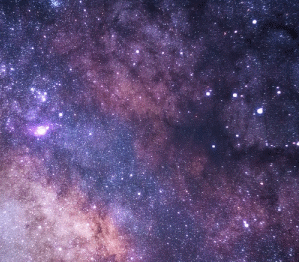GaryAnthony
This post is entered in 5 parts because it is long, segmenting makes it easier to reply and easier to read.
……………………..Critique of the Universe (in 5 parts)..……………………
See Part 5 for the final implications to the fate of the universe.
The following comments are not speculative. The following comments are not my own personal opinion. They do not constitute my own original research.If one carefully reads the papers submitted to ArXiv astrophysics from after 1998, one sees that Saul Perlmutter's and Adam Riess's supernova research groups were not independent, as claimed, and that they were in serious communication. Perlmutter and Riess actually wrote a paper together.
They say that the data that the two groups got regarding the distances to supernovae type 1a and other bright extremely distant objects was not concordant at first. In order to make the two data sets conform, they admit that they had to apply an "adjustment". This artificial factor was used by both groups to bring the data of one set into alignment with the other so that a smooth plot could be made that included all the data points.
The sense of this artiface alone is the sole "evidence" that they both cite for an accelerating rate of expansion of the universe. They might have applied the adjustment to the other data set in the opposite sense. Then, the universe expansion rate would have been seen as decelerating.
There was a choice to be made. A cynic might hazard a guess as to why they made the choice that they did.
Furthermore, Mordehai Milgrom's discovery of the MOND effect (modified Newtonian dynamics) does not acknowledge that spiral galaxies almost always contain supermassive black holes in their nuclei. Black holes are enormous relativistic point masses with infinite density. Such "singularities" must have singular gravitational fields also. Such fields decline as 1/r or hyperbolically, not as 1/r^2 or parabolically, as assumed by Newton's Law of gravity.
The difference between the black hole hyperbolic gravitational potential and the Newtonian parabolic one accounts for Milgrom's residual centripetal acceleration constant that he found for stars near the peripheries of spiral galaxies. So, the invention of unfalsifiable "Dark Matter" to acount for the MOND effect is as unnecessary as the construction of the Dark Energy ediface to account for putative "acceleration".
So, given the doubtful nature of Dark Energy and Dark Matter, what do we do about the "missing mass" necessary to account for the flatness apparent in the anisotropy shown by the cosmic microwave background radiation (CMB)? The easiest way is to postulate that the universe is about 22 times as massive as our little telescopes can discern. The signal strength, statistical distribution and identifiable extra contributions (as from the SZ effect) to the CMB implies that our current inventory of matter and energy in the universe accounts for only about 4.5% of its total mass. So, 100/4.5 = 22.2, that is, the mass of the universe must be around 22 times bigger than we can tell from our limited perspective here on Earth. If the universe is that much bigger and more massive than conventional wisdom admits, it accounts for the CMB characteristics, the red-shift effects, the gravitational lensing effects and the SZ effects that are being used to give credibility to acceleration and Dark Energy.
In other words, Dark Energy and Dark Matter are subject to Occam's Razor as mere whiskers on the chin of astrophysics.
It should be pointed out that there have been many monumental scams in science before. Piltdown Man and Cold Fusion come to mind. Remember, many reputable scientists fell for these frauds completely for long periods of time. Clearly, we must be wary of any kind of massive pseudoscience which may still be going on today!
See Part 5 for the implications to the fate of the universe.
Cosmologists are always wrong, but never in doubt. - Lev Landau


